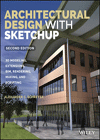Reality television may compel you to run away shrieking, but as an architect, you owe it to yourself to tune into Architecture School. Conceived by two individuals with experience both in film and architecture (Michael Selditch—a director trained as an architect—together with architecture professor Stan Bertheaud, currently teaching at Woodbury University in Southern California), the series highlights the acute, nail-biting joy and anguish of the architectural studio. For any architect who has been through school years before, the six-part series induces a frisson and a welcome peek at our shared past.

At the same time, Architecture School seems wholly new. We meet eight bright young ones, eagerly signed into professor Byron Mouton’s fourth-year studio in a program called Urbanbuild. We laugh or cheer or shrug for the designs and the personal decisions of Amarit, Adriana, Chris, Kim, Ian, Alex, Carter, and Casey. Should Chris have gone rock climbing with a design review looming? Can Amarit transfer his smarts into a compelling house? And former dean Kroloff’s design critique, fully earned by the student, may make you squirm. We’ve all been there; it’s a rite of passage.
Unlike your own school experience, this Tulane program (full disclosure: The writer is a Tulane graduate, never mind when) works in partnership with a nonprofit, the Neighborhood Housing Services of New Orleans, in a post-Katrina midcity neighborhood, allowing students to design and build a low-cost residence for a future client. The students get to build the house the entire studio chooses, and then meet the prospective owner. What an exhilarating education for students and their teachers.
For a profession traditionally cast as the servant of the rich and powerful (think god/king or C.E.O.), how refreshing to move architecture away from the Masters of the Universe and answer the call enunciated 150 years ago by Walt Whitman. Whitman, perhaps our greatest poet, followed his father’s path and became a carpenter, building simple houses for working people. In the mid-1850s, the lyric genius of democracy read Emerson, hammered, and moved from house to house, forming ideas as he built, read, and reflected, a period when he began his masterwork, “Leaves of Grass.” Building and art occurred almost simultaneously. Who designs for the common man or woman today? Today’s architects increasingly do.
Visit any architecture campus in the United States, where community-based design and design-build have taken a hold. The enthusiasm for socially conscious architecture witnessed in the academy and on Architecture School, in locales from the now-famous Rural Studio to the heart of Manhattan, reflects a core value that students are hungry to share.
Throughout history, architects have been drawn to the need for shelter. This social art has attracted architectural leaders who have been articulating its values, including, in our time, many of the architects featured in this issue of architectural record. Socially conscious architecture need not be limited to a single issue of one publication. Active practitioners such as Michael Pyatok, Larry Scarpa, Michael Lehrer, Michael Rotondi, Frederick Schwartz, and Carol Burns, each of whom has stood up for real people with real needs, have managed to interweave a range of human needs into the fabric of their practices throughout their careers.
At a time that electronic technology allows us to think and practice differently, to encounter our architectural subject in the abstract, to conduct the architectural discourse in a virtual, hands-off way, is it any wonder that the incoming generation is seeking new answers about what it means to be an architect? Architecture consists of more than three-dimensional digital mastery, or technical skill, or formal inventiveness—all qualities that have been trumpeted and practiced for the past decade. Architecture shelters real people living real lives, with real needs and wants. Architecture School reminds us of the social milieu that gives rise to our design ideas. Students remind us that architecture serves the whole culture—more than any individual firm or practice. Our calling is both humble and profound, pragmatic and inspired, but people-centered. Check out the reruns.
If you wish to write to our editor-in-chief you can email him rivy@mcgraw-hill.com.



